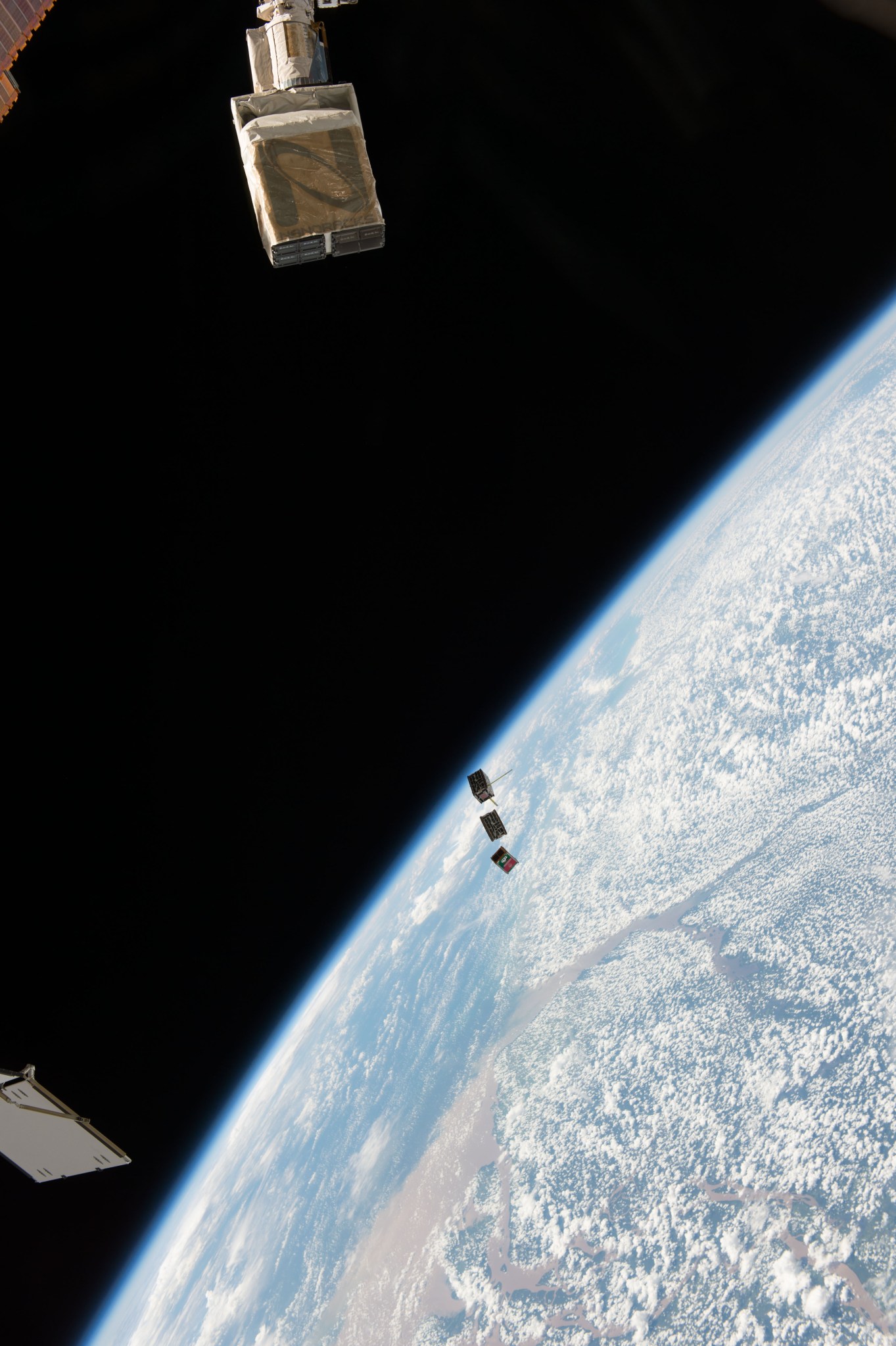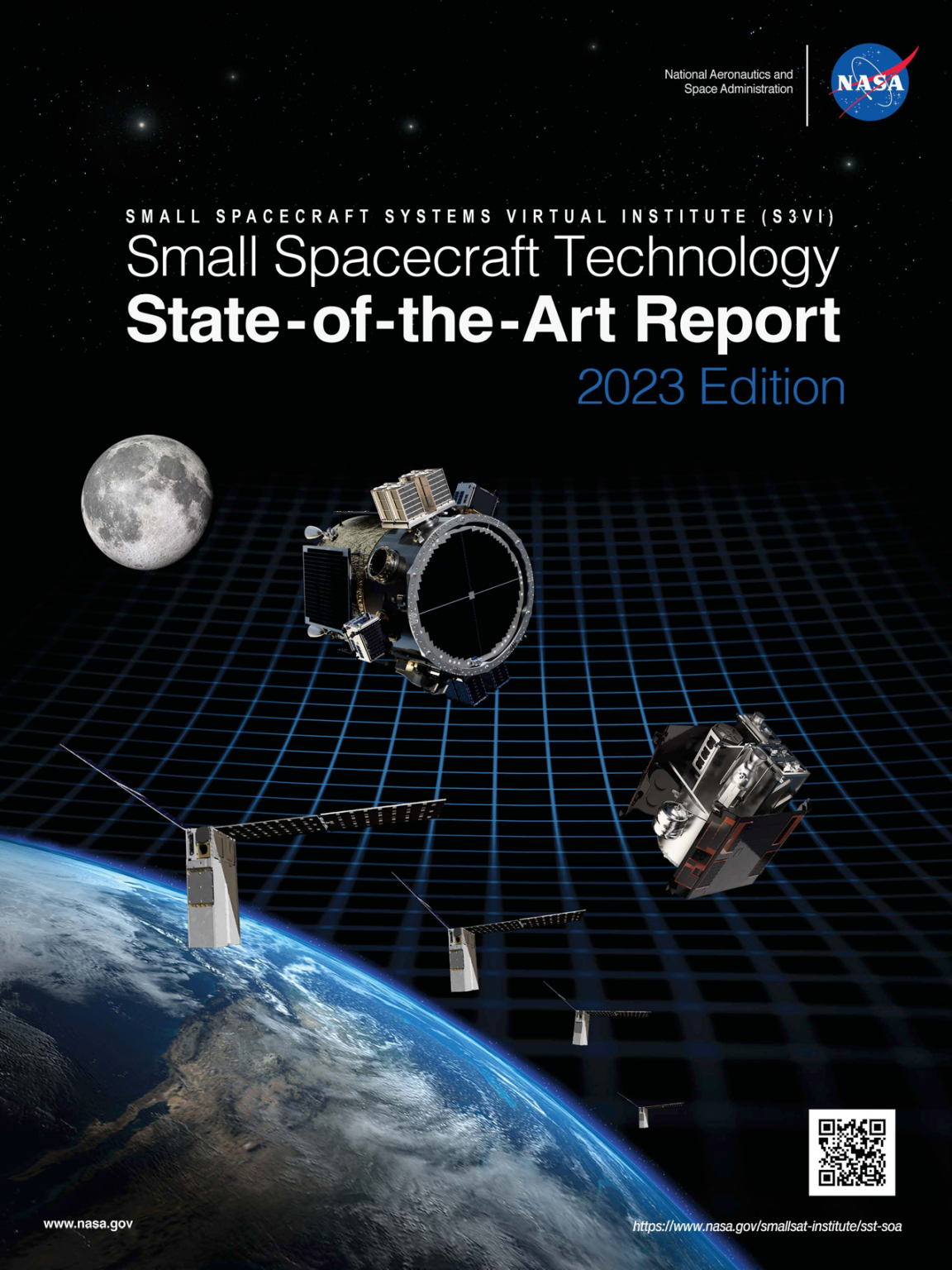NASA’s two Nodes small satellites hitched a ride to the International Space Station on the fourth Orbital ATK cargo mission, which launched on Dec. 6. The satellites are slated for deployment into low-Earth orbit in May 2016.
The Nodes mission, which consists of two CubeSats weighing just 4.5 pounds each and measuring 4 inches by 4 inches by 6.5 inches, will test new network capabilities for operating swarms of spacecraft in the future.
“The purpose of the Nodes demonstration is to test out the potential for using multiple, small, low-cost satellites to perform complex science missions,” said Andrew Petro, program executive for the Small Spacecraft Technology Program (SSTP) in the Space Technology Mission Directorate at NASA Headquarters in Washington.
A first for small satellites, Nodes will demonstrate the ability to receive and distribute commands in space from the ground in addition to periodically exchanging scientific data from their onboard radiation instruments. The satellites will be able to configure their data network autonomously by determining which spacecraft is best suited to communicate with the ground each day of the mission.
“The technologies demonstrated during this mission are important, as they will show that a network of satellites can be controlled without communicating to each satellite directly,” said Roger Hunter, program manager for SSTP at NASA’s Ames Research Center at Moffett Field, California. “Nodes will demonstrate inter-satellite communications and autonomous command and control; this will help enable future constellation command and control capabilities.”
Upon deployment from the station, the Energetic Particle Integrating Space Environment Monitor (EPISEM) radiation sensor aboard each Nodes satellite will collect data on the charged particle environment at an altitude of about 250 miles above Earth. The EPISEM instruments were provided under contract by Montana State University. The Nodes satellites will demonstrate their networking capabilities through communication of this data with each other and the ground.
As part of a partnership with Ames, Santa Clara University in California will conduct ground operations for the nominal two-week mission. Acting as a ground station, the university will provide an online mission dashboard with current mission status, including operational status of satellite subsystems, ground segment communications status and satellite location tracking. The dashboard is currently available for viewing, but will not be active until after the Nodes deploy from the ISS in mid-May.
The mission is scheduled to last for two weeks, though the CubeSats will remain in orbit for several more months before their orbit decays, they re-enter and burn up in the atmosphere.
Nodes continues the legacy of the Phonesat series of small satellites by using commercially developed Android smartphone technology augmented with additional custom software that enables the satellites to perform spacecraft functions.
The launch of the Nodes small satellites follows last month’s launch of the eight small satellites of the Edison Demonstration of Smallsat Networks (EDSN) mission, which was lost in the failure of the U.S. Air Force-led Operationally Responsive Space Office’s ORS-4 mission. However, the Nodes spacecraft were developed at Ames by the same team that developed the EDSN spacecraft and many of the same capabilities planned for EDSN will be demonstrated in the Nodes mission, with additional software enhancements.
“The Nodes mission concept was an opportunity to leverage the excellent work done on EDSN, and extend the systems at a low-cost and effort,” stated David Korsmeyer, director of engineering at Ames. “This is the value of the nanosat model of mission — quickly adapt to new opportunities and leverage systems for incremental missions.”
Networked swarms of small satellites will open new horizons in astronomy, Earth observation and solar physics. Their range of applications includes multi-satellite science missions, the formation of synthetic aperture radars for Earth sensing systems, as well as large aperture observatories for next-generation telescopes. They can also serve to collect science measurements distributed over space and time to study the Earth, the Earth’s magnetosphere, gravity field, and Earth-Sun interactions.
The Nodes project is sponsored by the SSTP, a program within NASA’s Space Technology Mission Directorate, and received additional funding from the Ames Research Center.
For more information on NASA’s Small Spacecraft Technology Program, visit:
https://www.nasa.gov/smallspacecraft/
Author:
Julianna Fishman
Small Spacecraft Technology Program
Media contact:
Kimberly Williams
kimberly.k.williams@nasa.gov
Ames Research Center

































